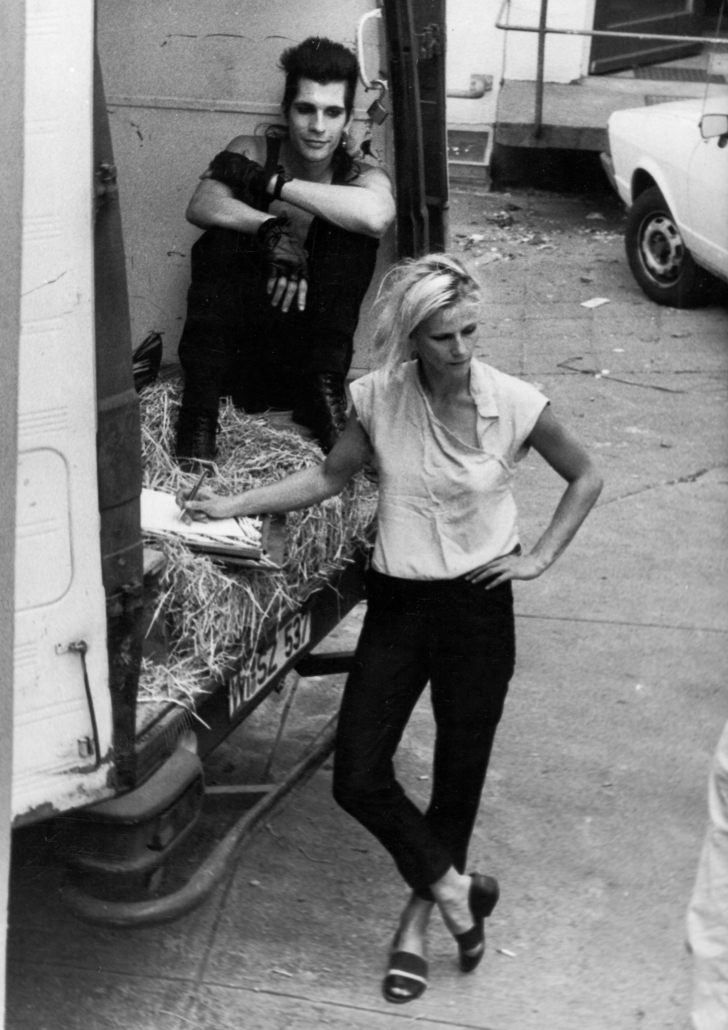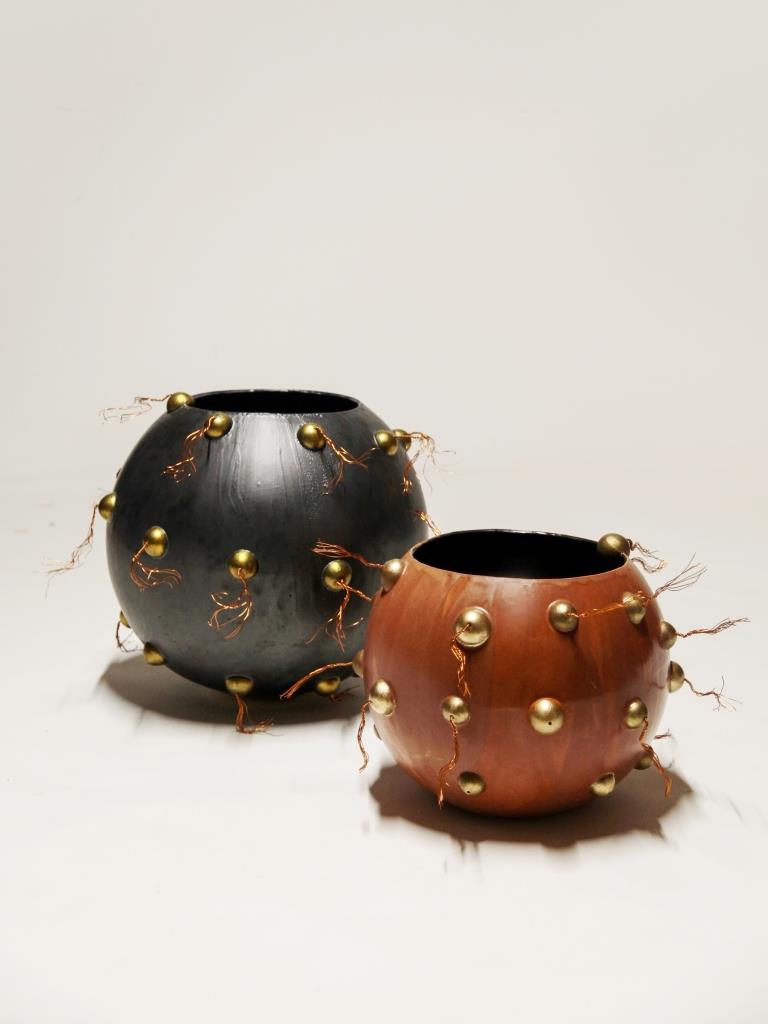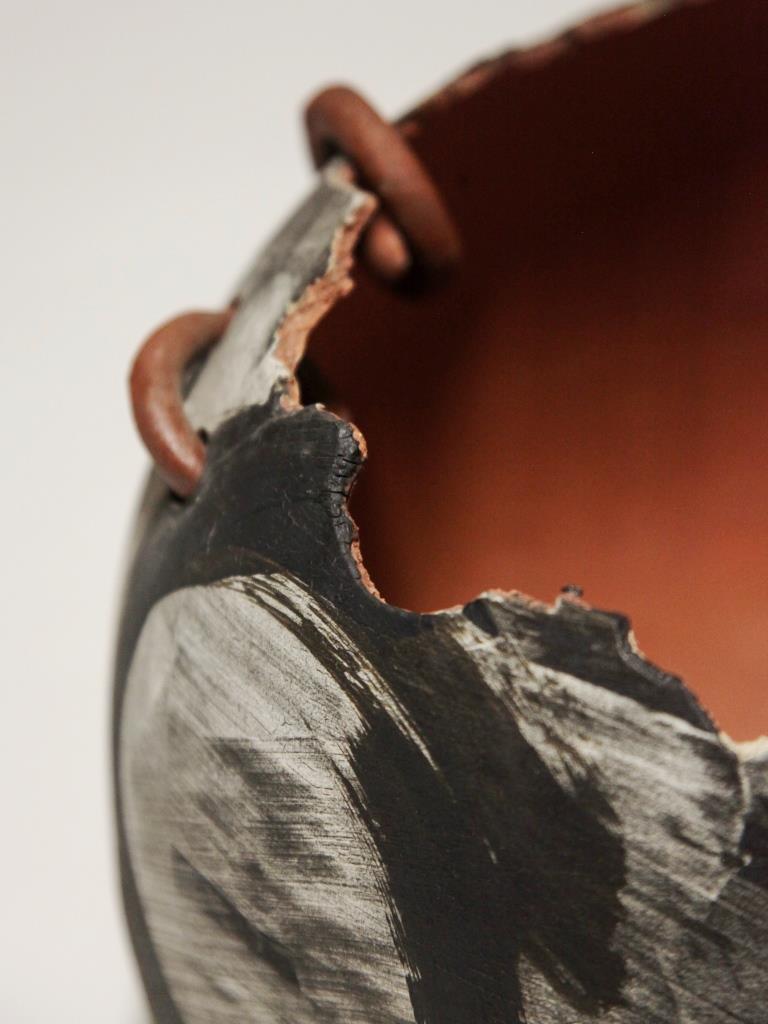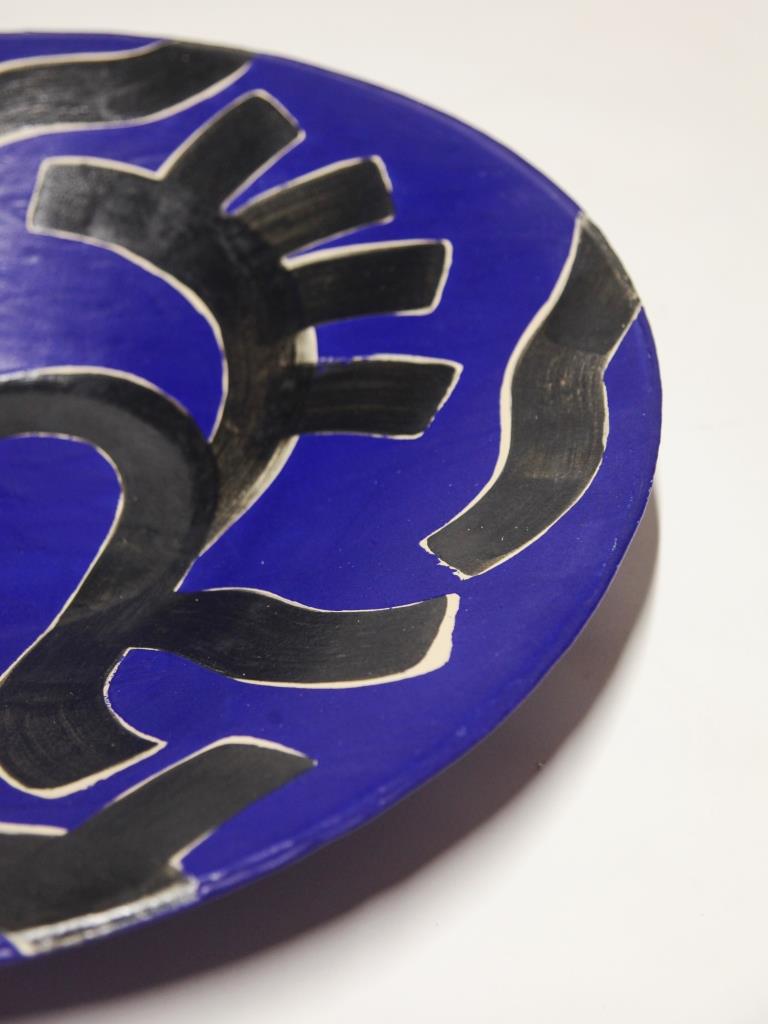Cocktail

Cocktail, an explosive name whose blast still resonates more than forty years after its launch. In 1981, Heike Mühlhaus, a recent graduate of the Wiesbaden School of Design and Ceramics, founded what would become one of the most iconic labels of the German counterculture. Together with Renate von Brevern, she opened a studio in this peaceful Hessian spa town, which quickly transformed into a veritable laboratory for experimentation.

Cocktail’s first catalog, titled “Innovative Keramik für Tisch und Raum” (Innovative Ceramics for Table and Space), reflects a desire to revitalize the discipline and push its boundaries. Disregarding conventions, Heike Mühlhaus departed from traditional methods, which she found too rigid and contrary to her ambition to “create large, simple forms” with open surfaces, conducive to the flourishing of painterly gesture and chromatic exploration.
Cocktail’s audacity was evident as early as 1984, when the duo attempted to participate in a design fair for the first time. Excluded from official channels, they decided to exhibit their creations in a bus parked in front of the building’s main entrance—a subtle yet powerful act of resistance, revealing their independent spirit and their ability to circumvent institutional structures.

This refusal to compromise found an even more radical expression during the famous “Cruise” they organized on the Rhine, during which pieces they deemed unsatisfactory were symbolically thrown into the water. This gesture, both performative and cathartic, reflected Heike Mühlhaus’s desire to liberate creation from all complacency. It also marked the birth of a true method: eliminating to clarify, rejecting to move forward.
Cocktail gradually abandoned tableware—cups, tumblers, vases, and plates—to focus on form pieces. Fueled by the electric energy of the 1980s and driven by the desire to project their work beyond the regional sphere, the two women moved their studio to Berlin in 1985. This move marked a new stage: the Label’s integration into a vibrant art scene where disciplines intersected.

Claiming an approach that is “open, evolving, and always uncertain in its outcome,” Heike Mühlhaus is revolutionizing the working of clay. By combining metal with ceramics, she reinforces its telluric character; each piece seems to emerge from the earth’s core, which, metaphorically, contributes to forging an underground aesthetic.
This relationship to the origins of beings and matter is also manifested in her treatment of form, which is alternately archetypal of Antiquity and the Middle Ages and universal, such as the sphere and the disc, whose geometry embodies unity, balance, and totality.

Through a subtle mise en abyme of the creative process, Heike Mühlhaus’s works with their jagged collars seem to blossom, defining themselves as much by what they retain as by what they liberate.
The Berlin-based ceramicist also draws on the motif: the Greek Cross, a recurring motif in Cocktail’s work, constitutes a strong visual marker, shared by the alternative scene of the late 1980s. Both immediately recognizable and culturally polysemous, it is part of the transgressive iconography developed by punk, metal, and techno music groups, while artists like Jean-Michel Basquiat, Keith Haring, and Barbara Kruger use it to structure space and create visual tensions in painting.
Similarly, the tribal motifs Cocktail draws from African and Asian cultures are graphically reinterpreted and detached from their ritual function. As components of distinctive ensembles, they mark both an attachment to traditions perceived as authentic and an aesthetic and identity claim.

The 1991 retrospective at the Magdeburg Museum celebrated the label’s 10th anniversary. Following Renate von Brevern’s departure that same year, Heike Mühlhaus continued to lead Cocktail alone. She then conceived new collections of objects and developed numerous collaborations in both interior architecture and design. By placing the working of clay at the heart of avant-garde movements, Cocktail illustrates ceramics’ capacity to transcend its utilitarian function and become a leading cultural and symbolic force, at the crossroads of contemporary practices. Each of Heike Mühlhaus’s works thus functions as a fragment of a total artwork, both intimately Berlin-based and universally resonant, whose impact on European design is still felt today.


